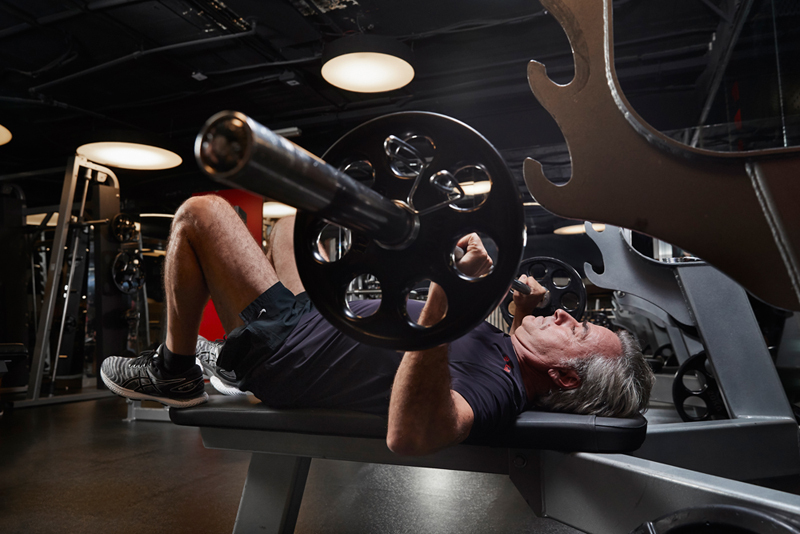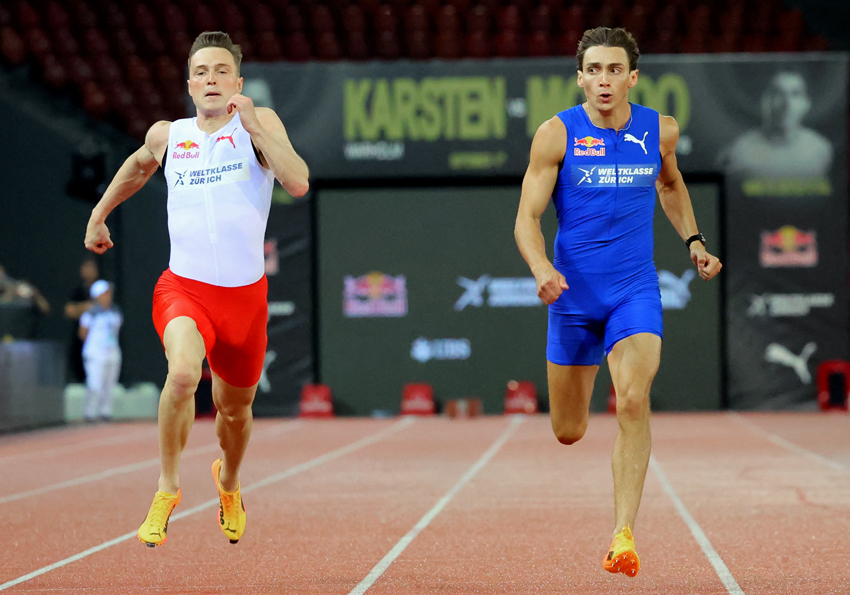Isokinetic training: steady does it for serious gains

Read any article on resistance training programs and the chances are you’ll find reams and reams on different weight training exercises for different areas of the body. However, these exercises will almost certainly all have one thing in common; no matter what the exercise, they’ll be performed on weight machines, using free weights, or using your own body weight. While using a constant load or weight to work muscles during an exercise is an effective and proven way to make progress, there are also very different ways, one of which is ‘isokinetic training’.
Three types of training
Using a fixed resistance (such as that provided by a barbell, dumbbell, weight stack machine or your own body weight) is by far the most popular way of building muscular strength and power, and is more technically known as ‘isotonic’ (iso meaning same, tonic meaning weight) training. However it’s actually only one of three main methods, the other two being ‘isometric’ (same distance) and ‘isokinetic’ (same speed). Let’s take a closer look at each of these methods:
*Isometric training – is where muscles exert force but in a static or constant position - for example, holding a dumbbell in the outstretched arm in the same stationary position for any length of time, which results in shoulder muscle fatigue. This is because the muscle fibers are firing to exert a constant force against gravity in order to keep the arm raised and in a static position. Isometric training is therefore very useful for muscles whose job it is to hold a static position – for example those involved in maintaining posture. In addition, isometric strength training can be a useful component in athletes’ training regimes in the following circumstances(1):
- To avoid getting overly fatigued while still acquiring positive neuromuscular adaptations.
- To improve the strength at a biomechanically disadvantaged joint position of a specific movement.
- To improve sports specific movements that require mainly isometric contractions.
- When athletes have limited mobility due to injuries.
The downside of isometric strength training for athletic performance is that due to its static (rather than dynamic) nature, it provides very little sport specificity for most athletes, whose sports involve muscles continually moving through varying ranges of movement. This is a major drawback as we know that specificity of training exercise (ie exercises that closely mimic movements required in a sport) is important to produce functional gains in that sport(2,3).
Isotonic training – this is what most people think of as ‘normal’ weight training. In isotonic training, the muscle contracts and moves against a constant weight or resistance force. In the example above, if outstretched arm was continually raised and lowered, that would be isotonic training, because the shoulder muscle fibers are contracting and working against a constant while the muscle move through a range of motion. Most weight training using either free or machine weights (where the same weight or load is moved back and forth) is in fact isotonic training. Body exercises such as press-ups also fall into this category because the forces acting on the muscles come from the body’s own weight, which stays constant throughout the range of movement. There’s a simple reason why isotonic weight training is used so ubiquitously – it’s extremely effective. A large body of evidence has accumulated showing that adding conventional weight training is universally advantageous for athletic performance(4).
Isokinetic training - this is where the muscle contracts and moves against a force at a constant and predetermined speed. In isokinetic training, the resistance or force against the muscle tends to vary, but the muscle itself contracts through its range of movement at a constant speed. A good example of ‘isokinetic-like movements in sport’ is rowing or swimming, where the faster an athlete tries to move through the water, the greater the resistance is encountered, which in turn tends to slow down the movement, keeping the speed constant.
Over the last two decades, a number of isokinetic resistance machines have appeared on the market. On these machines, the athlete programs in the desired speed of the movement (often chosen to replicate a sport-specific movement) and the machine continually adjusts the resistance to ensure that no matter how hard he/she works, the speed of motion through the movement is kept constant. Although isokinetic training offers a number of theoretical advantages (which we will explore below), truly isokinetic training machines tend to be rare, mainly because they’re more expensive to produce and purchase.
Why isokinetic?
If normal isotonic weight training is a proven and effective way of building strength, why should athletes consider isokinetic training? The answer involves the concept of recruiting the maximum amount of muscle fibres throughout the range of movement. This is best explained with an example. Suppose you were weight training and wanted to perform just one rep of an overhead shoulder press exercise, but with the maximum weight possible. In this exercise, the hardest point of the lift for most people (sometimes referred to as the ‘sticking point’) is about half way up, just as the elbows approach parallel with the shoulders. Consequently, to complete this movement you’d have to select a weight that you could manage at this middle point, even though you might be stronger at the beginning and end of the range of movement. This means that although your muscle fibers would be maximally loaded at the weakest joint/muscle position in the movement, they would be less than maximally loaded earlier and later in the movement.
You need to be logged in to continue reading.
Please register for limited access or take a 30-day risk-free trial of Sports Performance Bulletin to experience the full benefits of a subscription. TAKE A RISK-FREE TRIAL
TAKE A RISK-FREE TRIAL
Newsletter Sign Up
Testimonials
Dr. Alexandra Fandetti-Robin, Back & Body Chiropractic
Elspeth Cowell MSCh DpodM SRCh HCPC reg
William Hunter, Nuffield Health
Newsletter Sign Up
Coaches Testimonials
Dr. Alexandra Fandetti-Robin, Back & Body Chiropractic
Elspeth Cowell MSCh DpodM SRCh HCPC reg
William Hunter, Nuffield Health
Keep up with latest sports science research and apply it to maximize performance
Today you have the chance to join a group of athletes, and sports coaches/trainers who all have something special in common...
They use the latest research to improve performance for themselves and their clients - both athletes and sports teams - with help from global specialists in the fields of sports science, sports medicine and sports psychology.
They do this by reading Sports Performance Bulletin, an easy-to-digest but serious-minded journal dedicated to high performance sports. SPB offers a wealth of information and insight into the latest research, in an easily-accessible and understood format, along with a wealth of practical recommendations.
*includes 3 coaching manuals
Get Inspired
All the latest techniques and approaches
Sports Performance Bulletin helps dedicated endurance athletes improve their performance. Sense-checking the latest sports science research, and sourcing evidence and case studies to support findings, Sports Performance Bulletin turns proven insights into easily digestible practical advice. Supporting athletes, coaches and professionals who wish to ensure their guidance and programmes are kept right up to date and based on credible science.









